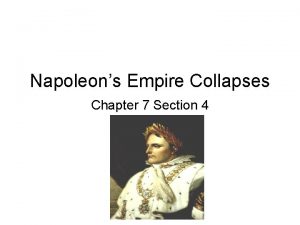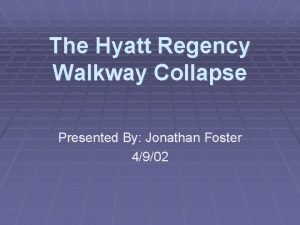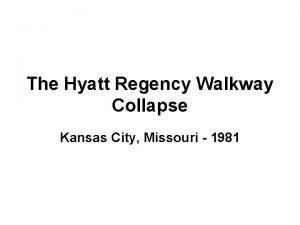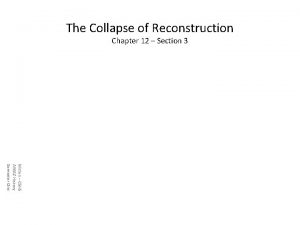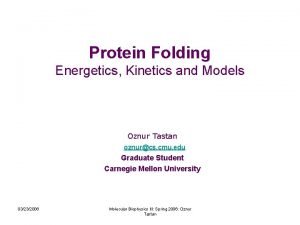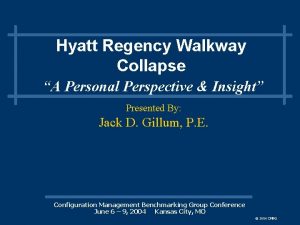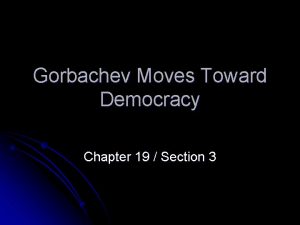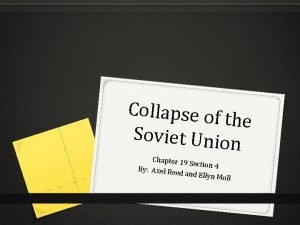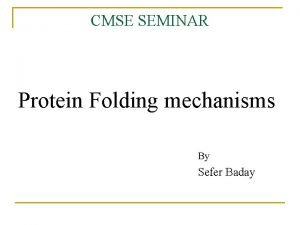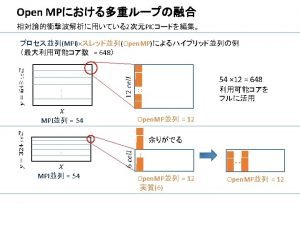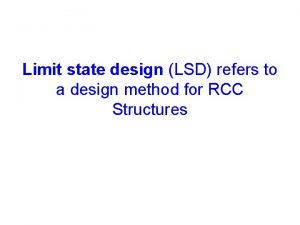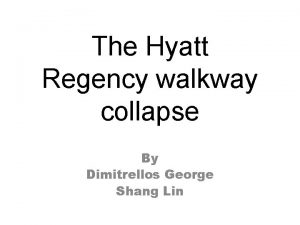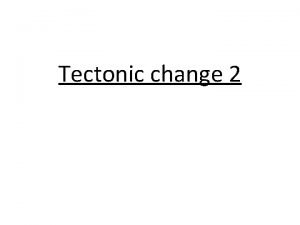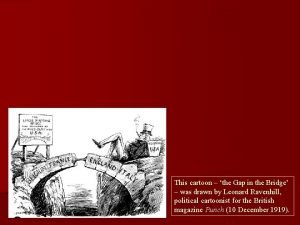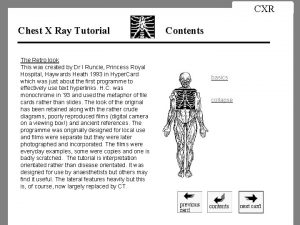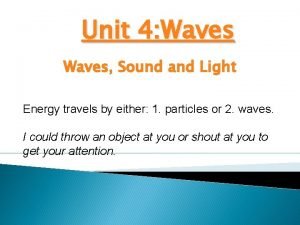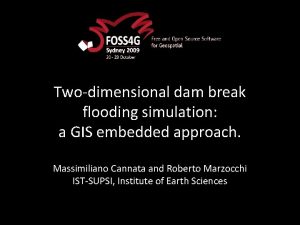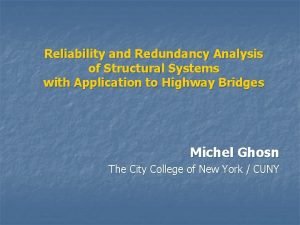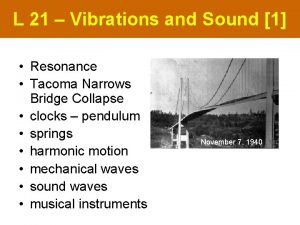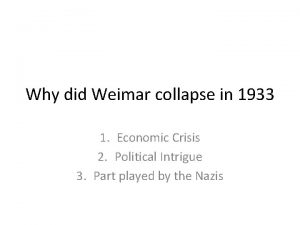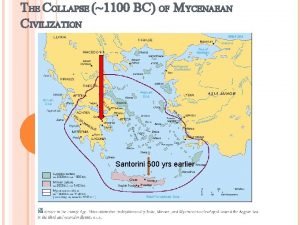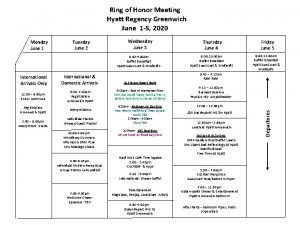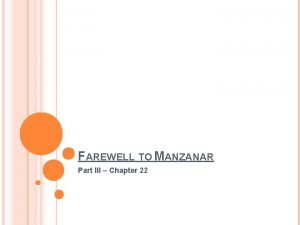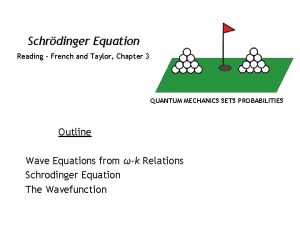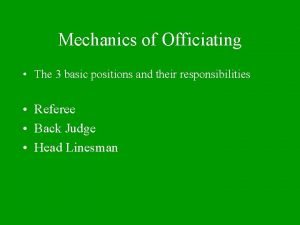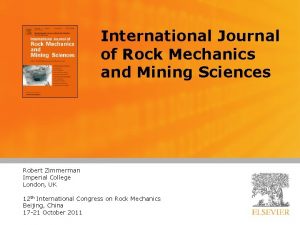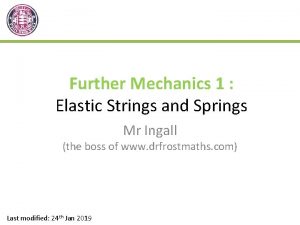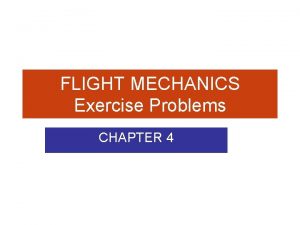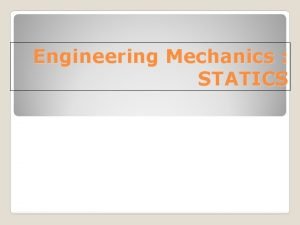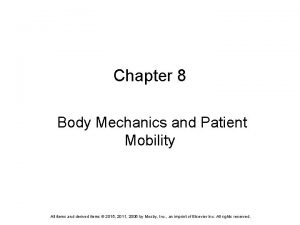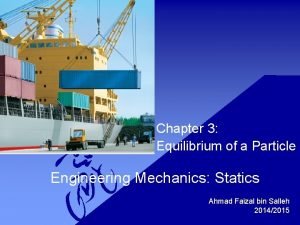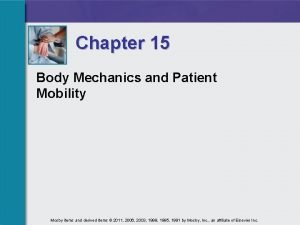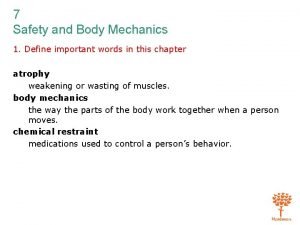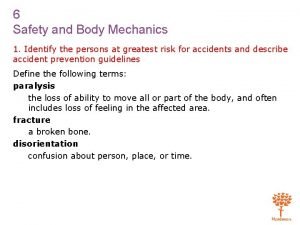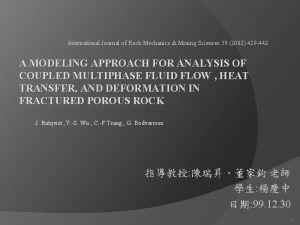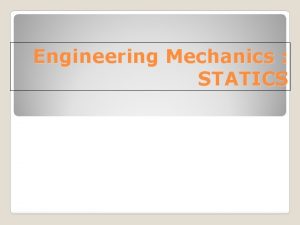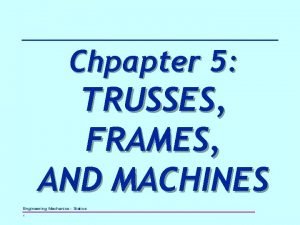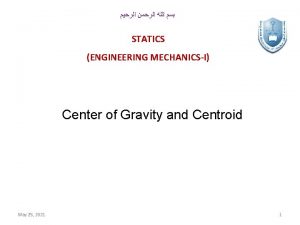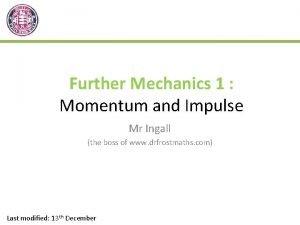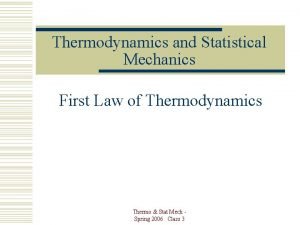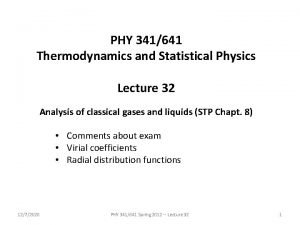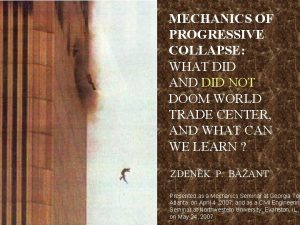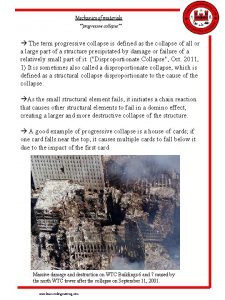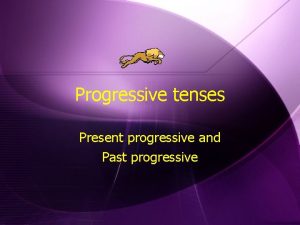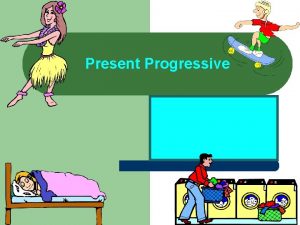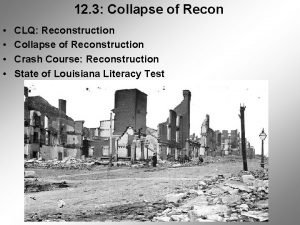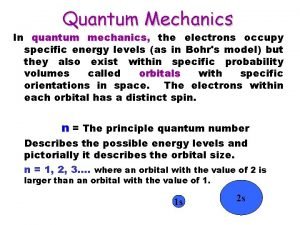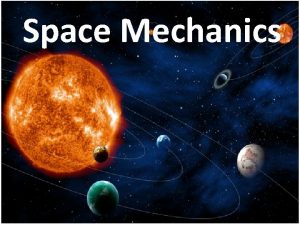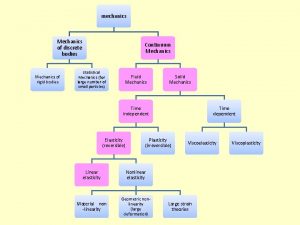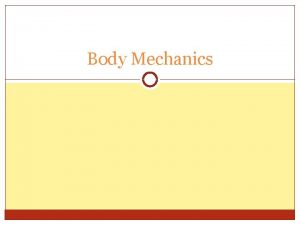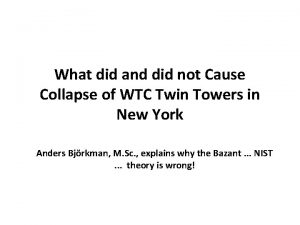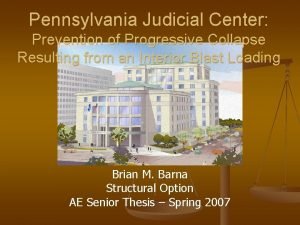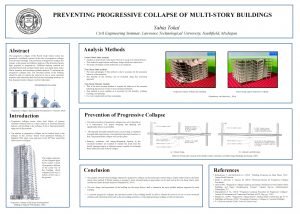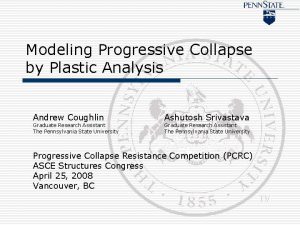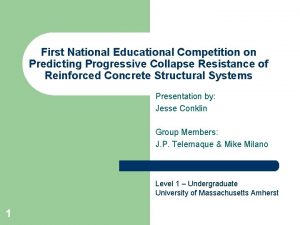MECHANICS OF PROGRESSIVE COLLAPSE WHAT DID AND DID






























































- Slides: 62

MECHANICS OF PROGRESSIVE COLLAPSE: WHAT DID AND DID NOT DOOM WORLD TRADE CENTER, AND WHAT CAN WE LEARN ? ZDENĚK P. BAŽANT Presented as a Mechanics Seminar at Georgia Tec Atlanta, on April 4 , 2007, and as a Civil Engineering Seminar at Northwestern University, Evanston, IL, on May 24, 2007

Collaborators: Jialiang Le Mathieu Verdure Yong Zhou Frank R. Greening David B. Benson

Structural System - framed tube

Previous Investigations • Computer simulations and engrg. analysis at NIST — realistic, illuminating, meticulous but no study of progressive collapse. • Mechanics theories of collapse: 1. Northwestern (9/13/2001) — still valid 2. E Kausel (9/24/2001) — good, but limited to no dissipation 3. GC Clifton (2001) — “Pancaking” theory: Floors collapsed first, an empty framed tube later? — impossible 4. GP Cherepanov (2006) — “fracture wave“ • Lay Critics: — Fletzer, hypothesis invalid. Jones, Elleyn, Griffin, Morgan, Ross, Ferran, Asprey, Beck, fin. el. 5. Henshall, AS Usmani, D Grierson, T Wierzbicki…special Bouvet, etc. simulations Movie “Loose Change” (Charlie Sheen), etc.

1 Review of Elementary Mechanics of Collapse

Initial Impact – only local damage, not Tower designed for impact of Boeing 707 -320 (max. takeoff weight is 15% less, fuel capacity 4% less than overall Boeing 767 -200) Momentum of Boeing 767 ≈ 180 tons × 550 km/h Momentum of equivalent mass of the interacting upper half of the tower ≈ 250, 000 tons × v 0 Initial velocity of upper half: v 0 ≈ 0. 7 km/h (0. 4 mph) Assuming first vibration period T 1 = 10 s: (about 40% of max. hurricane effect) Maximum Deflection = v 0 T / 2 p ≈ 40 cm

13% of colum were severed on impact, som more deflecte

1. 60% of 60 columns of impacted face (16% of 287 overall) were severed, more damaged. 2. Stress redistribution ⇒ higher column loads. 3. Insulation stripped ⇒ steel temperatures up to 600 o. C→yield strength down 20% at 300 o. C, -85% at 300 o. C, creep for > 450 o. C. 4. Differential thermal expansion + viscoplasticity ⇒ floor trusses sag, pull perimeter columns inward (bowing of columns = buckling imperfection). 5. Collapse trigger: Viscoplastic buckling of hot columns (multi-floor) down by d) e) → upper part of tower falls f) at least one floor height. 6. The kinetic energy of upper part can be neither elastically resisted nor plastically absorbed by the lower part of tower ⇒ progressive Phase collapse II. Crush-Up Phase (buckling + connections Failure Scenario a) b) c) I. Crush-Down

Toppling like a tree?

Why Didn't the Upper Part Fall Like a Tree, Pivoting About Base ? a) c) e) q MP F 1 m h 1 H 1 d b) x d) mg f) F 1 MP FP F Possible ? (The horizontal reaction at pivot) > 10. 3× (Plastic shear capacity of a

South tower impacted eccentrically

astic Shearing of Floor Caused by Tilti (Mainly South Tower) a b c d e

Elastically Calculated Overload Dynamic elastic overload factor calculated for maximum deflection (loss of gravity potential of mass m = strain energy) The column response could not be elastic, but plastic- m h

Can Plastic Deformation Dissipate the Kinetic Energy of Vertical Impact Upper Part? n = 3 to 4 ofplastic hinges per column line. q 1 q 2 q 3 Combined rotation angle: Dissipated energy: Kinetic energy = released gravitational potentia Only <12% of kinetic energy was dissipated by plasticity in 1 st story, less in further Collapse could not have taken much longer than a free fall

Plastic Buckling Case of single floor buckling L=2 Lef Fc ≥ Fs …can propagate dynamically P 1 q h MP P 1 u q L L/2 P 1 Yield limit F 0 lh buckling Fc F Servic s e load 0 Elastic Plastic 0 0 0. 5 h h MP Yielding F 0 Wf Load F Fc < Fs … cannot F 0 Shanley bifurcation inevitable! Expanded scale Axial Shortening u Plastic bucklin g 0. 04 h

2 Gravity-Driven Propagation of Crushing Front in Progressive Collapse

Two Possible Approaches to Global Continuum Analysis • Stiffness Approach homogenized elasto-plastic strain-softening continuum — must be NONLOCAL, with characteristic length = story height … COMPLEX ! • Energy Approach – non-softening continuum equivalent to snap____________ through* *—analogous to crack band theory, or to van avoids irrelevant noise der Waals …SIMPLER !

Crushing of Columns of One ü = g – F(u) / m(z) One-story equation. Story of motion: : Crushing Resistance F(u) F 0 ΔFd mg Fc 0 uc Rehardening Crushing force, F Initial condition: v velocity of impacting block K < Collapse arrest criterion: Kin. energy Wc Wb Lumped Mas λh q 1 Dynamic Snapthrough Maxwell Line Wc ΔFa q 2 q 3 uf Floor displacement, u h Lower Fc for multi-floor bucklin

b) Front decelerates c) Collapse arrested F 0 λh Crushing force, F a) Front Real Crushing accelerates F 0 Resistance F(z) Floor velocity, v mg Fc 0 v ΔFa h λh Fc mg ΔFa 0 v v 1 Deceleration 1 g-Fc/m v 1 tz for Fc λh v 1 Deceleration Acceleration u 0 0 h Displacement h v v 2 > v 1 v 1 g-Fc/m v 1 v 2 < v 1 u t c Fc mg 0 ΔFd W 1 = K u h u 0 h v Acceleration v 1 0 u v 2 >v 1 for Fc 0 v λh ΔFd W 1 = W 2 zc F(z) ΔFd W 1 = W 2 tz Time t c 0 λh Deceleration λh u h t time

Mean Energy Dissipation by Column Crushing, Fc, C ompa ction R a tio, λ , and a t F ront of P rogre ssive Total Internal energy C o (adiabatic) l potentiall : W = ∫ F(z)dz a p potentials= Πgravity - We Crushing Force, F a) Single-story plastic buckling L = h h h Fpeak Fc Floor n Wc n-1 Wc n-2 n-3 λh b) Two-story plastic buckling Fpeak 2λh Fc L = 2 h c) Two-story fracture buckling Fpeak L = 2 h Fs Fc n-4 Fc Fc Service load Distance from tower top, z Fc energyequivalent snapthroug h = mean crushing force

2 Phases of Crushing Front Propagation Crush-Up Crush-Down (Phase I of WTC) Mass shedding (Phase II of WTC or Demolition) Collaps e front Phase II Collaps e front

1 D Continuum Model for Crushing Front volume within perimeter Propagation λ = compaction ratio = Rubble h) Tower volume a) C z 0 b) z C s 0 B H A g) Can 2 fronts propagate up and down simultaneously ? ζ – NO ! z 0 . s = λs z 0 Δ t A y 0 = z 0 λ(H-z 0) Phase 1. Crush-Down ζ . zΔt Fc’< Fc if slower than free fall Fc Phase 1 downward c) d) C B . i) m(z)v. Crush-Up. m(z)g m(y)y m(y)g Fc F c Fc Fc . yΔt μy. 2 y r 0 B’ C yη r = λr 0 B’ B λH B e) Phase 2. Crush-Up λz 0

Diff. Eqs. of Crushing Front I. Crush-Down Phase: Propagation z(t) z 0 Jetting air Buckling Comminution Resisting force Intact Criterion of Arrest (deceleration): Fc(z) > gm(z) II. Crush-Up Phase: Compaction ratio: Compacted y(t) z 0 Inverse: If functions z(t), m(z), l(z) are known, the specific energy dissipation in collapse, Fc(y), can be determined fraction of mass ejected outside perim

Resistance and Mass Variation along Variation of resisting force due to column buckling, Fb, (MN) Variation of mass density, m(z), (106 kg/m)

Energy Potential at Variable Mass rush-Down Crush-Up Note: Solution by quadratures is possible for constant average properties, no comminution, no air ejection

Tower Top Coordinate (m) Collapse for Different Constant Energy Dissipations (for no comminution, no air) Wf = 2. 4 GNm fall arrested 2 1. 5 phase 1 phase 2 free fall 1 0. 5 0 λ= 0. 18 , μ= 7. 7 E 5 kg/m , z 0 = 80 m , h = 3. 7 m Time (s)

Collapse for Different Compaction Ratios Tower Top Coordinate (m) (for no comminution, no air) transition between phases 1 and 2 free fall Wf = 0. 5 GNm , μ= 7. 7 E 5 kg/m , z 0 = 80 m , h = 3. 7 m λ= 0. 4 0. 3 0. 18 0 Time (s)

Tower Top Coordinate (m) Collapse for Various Altitudes of Impact for impact 2 floors below top mg < F 0, heated 5 (≈ 2. 5 E 7 GNm) free fall 20 phase 1 phase 2 55 λ= 0. 18 , h = 3. 7 m μ= (6. 66+2. 08 Z)E 5 kg/m Wf = (0. 86 + 0. 27 Z)0. 5 GNm Time (s) (for no comminution, no a

Tower Top Coordinate (m) Crush-up or Demolition for Different Constant Energy Dissipations Wf = 11 GNm fall arrested free fall 6 5 4 3 2 0. 5 asymptotically parabolic end λ= 0. 18 , μ= 7. 7 E 5 kg/m , z 0 = 416 m , h = 3. 7 m Time (s) (for no comminution, no air)

Resisting force as a fraction of total Impacted Floor Number Resisting Force /Total Fc 96 81 48 5 F 110 Impacted Floor Number 81 64 25 F 101110 Fb Fb Crush-down ends North Tower Fs Fa Time (s) Fs Fb Fa South Tower Fs Fb Fs Fa Time (s) Fa

Resisting force / Falling mass weight Impacted Floor Number Fc / m(z)g 96 81 48 5 F 110 Crush-down ends North Tower Time (s) Impacted Floor Number 81 64 25 F 101110 Crush-down ends South Tower Time (s)

Resisting force Fc and Fm (MN) External resisting force and resisting force due to mass accretion Impacted Floor Number 96 81 48 5 F Impacted Floor Number 81 64 25 F Fm Fm Fc North Tower Time (s) Fc South Tower Time (s)

3 Critics Outside Structural Engineering Community: Why Are They Wrong?

1) Lay Criticism of Struct. Engrg. Primitive Thoughts: Consensus Ø Euler's Pcr too high Shanley bifurcation Ø Buckling possibility denied Ø Plastic squash load too high, etc. Ø Initial tilt indicates toppling like a tree? — So explosives must been used ! No ! — horizontal reaction is unsustainable Like a Tree? No ! Mass Centroid No ! ~4º tilt due to asymmetry of damage ~25º (South Tower) non-accelerated rotation about vertically moving Ft

2) Collapse was a free fall ! ? Therefore the steel columns must have been destroyed Video Record of Collapse of WTC beforehand — by planted Towers explosives? North Tower South Tower

Tilting Profile of WTC South Tower t 1 t 2 m s e Video -recorded (South Tower) Initial tilt East Nort c H 1

Tower Top Coordinate (m) Comparison to Video Recorded (comminution and air ejection are irrelevant for first 2 Motion or 3 seconds) From crush-down differential eq. Free fall First 30 m of fall North Tower Time (s) Not fitted but From crush-down differential eq. Note Free fall uncertainty range First 20 m of fall South Tower (Top part large falling mass) Time (s) Video analyzed by Green

compared Seismic and video records rule out the free f H From seismic data: 417 m crush-down T ≈ 12. 59 s ± North Tower 0. 5 s with Free Impact of pulverization compacted fall with expelling air rubble impeded by layer on single-story 12. 81 s rock base of bathtub buckling only 8. 08 s 12. 29 s 12. 62 s 0 m -20 m Most likely time from seismic record Seismic rumble T

Ground Velocity Tower Top Coordinate (m) ( m/s) Calculated crush-down duration vs. seismic record North Tower South Tower with air ejection & comminution Seismic error Free fall Calculatio n error Crush-down ends with buckling only Free fall a Seismic error Calculatio n error Free fall a b c 0 4 8 Time (s) 12 16 0 4 8 Time (s) 12

3) Pulverizing as much as 50% of concrete to 0. 01 to 0. 13 mm required How much explosive would be needed explosives! pulverize 73, 000 tons of lightweight NO. to— only 10% of kinetic energy concrete of one tower to particles of size sufficed. 0. 01— 0. 1 mm ? • 237 tons of TNT per tower, put into small drilled holes (the energy required is 95, 000 MJ; 30 J per m 2 of particle surface, and 4 MJ per kg of TNT, assuming 10% efficiency at best).

Comminution (Fragmentation and Pulverization) of Concrete Slabs Schuhmann's law: mass of particles < Dtotal 0. 01 ry y st o or st ab te 1 sl ct density of particle size Im pa te 0. 012 mm = Dmin rm ed c a p Im 16 mm ia n o t n u o r g in Cumulative Mass of Particles (M / Mt) Energy dissipated = kinetic energy loss ΔK 0. 12 d mm 1 D particle size k 0. 16 mm = Dmin 0. 1 1 10 Particle Size (mm)

Kinetic Energy Loss ΔK due to Slab Impact Compact Momentum balance: Fragments m ed layer v 1 Comminut ed slabs K Kinetic energy loss: = ms concrete K v 2 Kinetic energy to pulverize concrete slabs & core walls Total: Gravitationa l energy K K K Concrete Buckling Air fragments (energy conservatio

Maximum and Minimum Fragment Size at Crush Front (mm) Fragment size of concrete at crush front Impacted Floor Number 96 81 48 5 F 110 Crush-down ends Dmax Dmin North Tower Time (s) Impacted Floor Number 81 64 25 F 101110 Crush-down ends Dmax Dmin South Tower Time (s)

Comminution energy / Kinetic energy of falling mass Impacted Floor Number 81 48 5 F 110 81 64 25 F 101110 Wf / К 96 Impacted Floor Number Crush-down ends North Tower Time (s) Crush-down ends South Tower Time (s)

Md / Ms Dust mass (< 0. 1 mm) / Slab mass Impacted Floor Number 96 81 48 5 F 110 Crush-down ends North Tower Time (s) Impacted Floor Number 81 64 25 F 101110 Crush-down ends South Tower Time (s)

Energy Variation (GJ) Loss of gravitational potential vs. comminution energy South Tower North Tower Loss of gravitational potential Ground impact Comminuti on energy Time (s)

a 4) Booms During Collapse! Air squeezed out If air escapes story-by-story, of 1 story in 0. 07—hence, s planted its mean velocity at base Air Jets explosives? is va = 461 mph (0. 6 Mach), h but locally can reach speed of 200 m of concrete dust orsound fragments (va < 49. 2 m/s, Fa < 0. 24 Fc, pa < 0. 3 atm) 5) Dust cloud expanded too rapidly? Expe

North Tower Collapse in Sequence Note: • Dust-laden air jetting out • Moment of impact cannot be detected visuall

Moment of ground impact cannot be seen, but record: Collapsefrom duration = 12. 59 s (± 0. 5 s of seismic Note jets of dustladen air

6) Pulverized concrete dust (0. 01 to 0. 12 mm) deposited as far as 200 m away? — Logical. 7) Lower dust cloud margin = crush — air would have to escape through a rocket nozzle!

8) Temperature of steel not high enough to lower yield strength fy of structural steel, § fy reduced by 20% at 300ºC, by 85% at 600ºC to(NIST). cause creep buckling? § Creep begins above 450ºC. § Steel temperature up to 600ºC confirmed by annealing studies at NIST.

9) Thermite cutter charges planted? — evidenced by residues of S, Cu, Zi found in dust? But these must have come from gypsum wallboard, electrical wiring, galvanized sheet steel, etc. 10) “Fracture wave” allegedly propagated pre-damaged, e. g. , by explosives, led to free-fall coll in a material — unrealistic hypothesis, because: § A uniform state on the verge of material failure cannot exist in a stable manner, because of localization instability.

much 4 How the findings can be exploited by tracking demolitions

Proposal: In demolitions, measure and compare energy dissipation per kg of. Use: structure. 1) High-Speed Camera 2) Real-time radio-monitored accelerometers: Note: Top part of WTC dissipated 33 k. J

Collapse of 2000 Commonwealth Avenue in Boston under construction, 1971 (4 people killed) The collapse was initiated by slab punching)

Murrah Federal Building in Oklahoma City, 1995 (168 killed)

Ronan Point Collapse U. K. 1968 Weak Joints, Precast Mem Floor slab Reinforcing Bar

Hotel New Wo Singapore 1986

Generalization of Progressive Collapse 1) 1 D Translational-Rotational --- "Ronan Point" type Angular momentum and shear not negligible 25 th floor Gas explode d on 18 th floor 2) 3 D Compaction Front Propagation — will require finite strain simulation

Gravity-Driven Progressive Collapse Triggered by Earthquake

MAIN RESULTS • All WTC observations are explaine • All lay criticisms are refuted. Download 466. pdf & 405. pdf from Bazant’s website: www. civil. northwestern. edu/people/bazant. html

References • • • Bažant, Z. P. (2001). “Why did the World Trade Center collapse? ” SIAM News (Society for Industrial and Applied Mathematics) Vol. 34, No. 8 (October), pp. 1 and 3 (submitted Sept. 13, 2001) (download 404. pdf). Bažant, Z. P. , and Verdure, M. (2007). “Mechanics of Progressive Collapse: Learning from World Trade Center and Building Demolitions. ” J. of Engrg. Mechanics ASCE 133, pp. 308— 319 (download 466. pdf). Bažant, Z. P. , and Zhou, Y. (2002). “Why did the World Trade Center collapse? —Simple analysis. ” J. of Engrg. Mechanics ASCE 128 (No. 1), 2 --6; with Addendum, March (No. 3), 369— 370 (submitted Sept. 13, 2001, revised Oct. 5, 2001) (download 405. pdf). • Kausel, E. (2001). “Inferno at the World Trade Center”, Tech Talk (Sept. 23), M. I. T. , Cambridge. • NIST (2005). Final Report on the Collapse of the World Trade Center Towers. S. Shyam Sunder, Lead Investigator. NIST (National Institute of Standards and Technology), Gaithersburg, MD (248 pgs. ) Download 466. pdf & 405. pdf from Bažant’s website: www. civil. northwestern. edu/people/bazant. html
 Chapter 7 section 4 napoleons empire collapses
Chapter 7 section 4 napoleons empire collapses Structure of past simple
Structure of past simple Present passive
Present passive Affirmative past progressive
Affirmative past progressive Principles of information security 5th edition pdf
Principles of information security 5th edition pdf Kansas city hilton collapse
Kansas city hilton collapse Kansas city hyatt collapse
Kansas city hyatt collapse The collapse of reconstruction
The collapse of reconstruction Hydrophobic collapse in protein folding
Hydrophobic collapse in protein folding Kansas city hyatt regency walkway collapse video
Kansas city hyatt regency walkway collapse video Hyatt skywalk collapse
Hyatt skywalk collapse Gorbachev moves toward democracy
Gorbachev moves toward democracy Ramsgate walkway collapse
Ramsgate walkway collapse Chapter 19 section 3 the collapse of the soviet union
Chapter 19 section 3 the collapse of the soviet union Sefer baday
Sefer baday Chapter 29 the collapse of the old order
Chapter 29 the collapse of the old order Omp for collapse
Omp for collapse Limit state of collapse
Limit state of collapse Hyatt regency walkway collapse summary
Hyatt regency walkway collapse summary San francisco bridge collapse earthquake
San francisco bridge collapse earthquake The gap in the bridge
The gap in the bridge Characteristic of medieval theater
Characteristic of medieval theater Cxr borders
Cxr borders Bridge collapse due to resonance
Bridge collapse due to resonance Three gorges dam collapse simulation
Three gorges dam collapse simulation Structural redundancy
Structural redundancy Bronze age collapse
Bronze age collapse Bridge collapse due to resonance
Bridge collapse due to resonance What was chancellor brüning nickname
What was chancellor brüning nickname Mycenaean civilization collapse
Mycenaean civilization collapse Hyatt regency walkway collapse photos
Hyatt regency walkway collapse photos With whom does napoleon play cards with
With whom does napoleon play cards with Chapter 9 section 4 progressivism under taft
Chapter 9 section 4 progressivism under taft Present simple present progressive past simple
Present simple present progressive past simple What did jeanne remember, and what did it signify?
What did jeanne remember, and what did it signify? French and taylor quantum mechanics
French and taylor quantum mechanics Safety and body mechanics chapter 6
Safety and body mechanics chapter 6 Mechanics of officiating
Mechanics of officiating Rmre journal
Rmre journal Further mechanics elastic strings and springs
Further mechanics elastic strings and springs The altimeter on a low-speed airplane reads 2km
The altimeter on a low-speed airplane reads 2km Centroid engineering mechanics
Centroid engineering mechanics Neurovascular assessment includes
Neurovascular assessment includes Reatraints
Reatraints Particle equilibrium in 2d and 3d engineering mechanics
Particle equilibrium in 2d and 3d engineering mechanics Chapter 8 body mechanics and patient mobility
Chapter 8 body mechanics and patient mobility Pass and race acronyms
Pass and race acronyms Safety and body mechanics
Safety and body mechanics Staar grammar and mechanics rules
Staar grammar and mechanics rules Staar l
Staar l International journal of rock mechanics and mining science
International journal of rock mechanics and mining science Fluid mechanics fundamentals and applications 3rd edition
Fluid mechanics fundamentals and applications 3rd edition Center of gravity statics
Center of gravity statics Truss engineering mechanics
Truss engineering mechanics Pictorial models of geometric figures with no labels
Pictorial models of geometric figures with no labels Static mechanics
Static mechanics Further mechanics 1 unit test 1 momentum and impulse
Further mechanics 1 unit test 1 momentum and impulse Purposes of body mechanics
Purposes of body mechanics Guidelines for bed making
Guidelines for bed making Micro and nanoscale fluid mechanics
Micro and nanoscale fluid mechanics Thermodynamics and statistical mechanics
Thermodynamics and statistical mechanics Bed making types
Bed making types Thermodynamics and statistical mechanics
Thermodynamics and statistical mechanics
